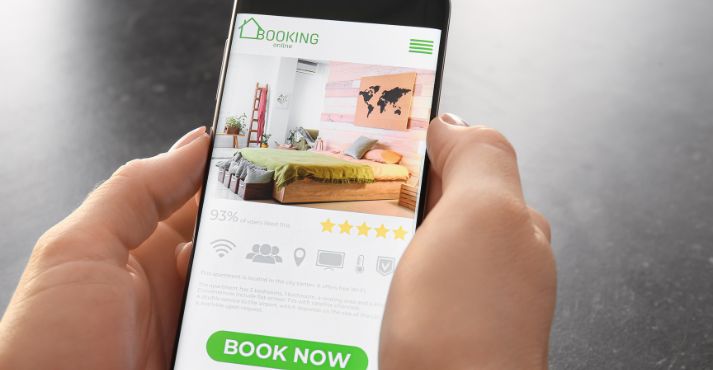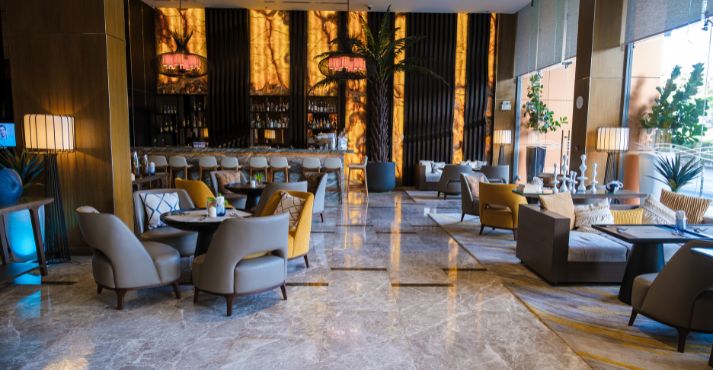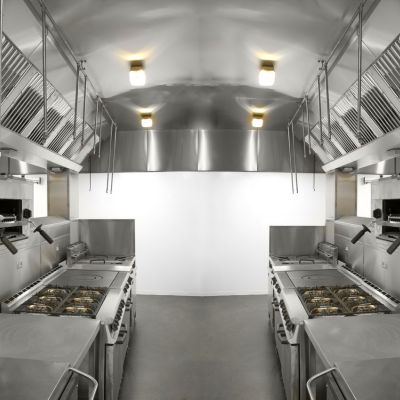Dive into the Look-to-Book Ratio, a key metric that’s the heartbeat of hospitality marketing. Let’s keep things straightforward and explore why this ratio matters and how it gauges the journey from interest to actual bookings, influencing the overall effectiveness of marketing strategies.
So, what’s the deal with the Look-to-Book Ratio? It’s like the compass guiding hotels in the vast marketing landscape. This metric tells us how many curious glances translate into confirmed reservations, vividly depicting a hotel’s marketing performance.
In simple terms, the Look-to-Book Ratio is a measure of success. The higher the ratio, the better a hotel turns those curious looks into confirmed bookings. It’s not just a number; it’s a reflection of how well a marketing strategy works in the real world of reservations.
As we journey through the intricacies of hospitality marketing, understanding the Look-to-Book Ratio becomes pivotal. It’s the tool that helps hotels fine-tune their strategies, ensuring they’re attracting attention and sealing the deal regarding bookings.
In a nutshell, the Look-to-Book Ratio is the pulse of effective hospitality marketing. It’s the bridge that connects potential guests’ interest to the actual act of booking, making it a metric every hotel should keep a keen eye on.
Defining the Look-to-Book Ratio: Unveiling the Key Metrics in Hospitality

Understanding and harnessing metrics play a pivotal role in shaping successful marketing strategies in the dynamic landscape of the food, beverage, and hospitality industry. The Look-to-Book Ratio is a crucial hospitality performance metric that often takes center stage.
What is the Look-to-Book Ratio?
At its core, the Look-to-Book Ratio is a simple yet insightful measure. It represents the proportion of users who engage with a hotel’s offerings, aptly termed as ‘look,’ compared to those who take the decisive step of making bookings, termed as ‘book.’
In simpler terms, it’s about gauging how many interested glances translate into confirmed reservations.
Why Does it Matter?
User Engagement:
The Look-to-Book Ratio is not merely a numerical value; it’s a window into user engagement.
Businesses gain insights into the effectiveness of their engagement strategies by delving into how many users explore a hotel’s offerings and, crucially, how many transition from browsing to booking.
Performance Indicator for Marketing Campaigns:
In the intricate world of marketing campaigns, understanding the Look-to-Book Ratio is akin to having a compass.
It guides marketers in evaluating the success of their initiatives. Are the captivating visuals and enticing descriptions translating into tangible bookings? The ratio tells the tale.
Exploring the Dynamics
Engagement Metrics in Hospitality
Engagement metrics are the heartbeat of the hospitality industry. In a landscape where impressions and interactions matter, the Look-to-Book Ratio emerges as a key player.
It goes beyond the surface, offering a nuanced understanding of how users interact with a hotel’s offerings.
Performance Indicators for Hotels
Performance indicators are the guiding stars for any establishment in the food, beverage, and hospitality niche. The Look-to-Book Ratio stands tall among these indicators, offering a snapshot of customer interest and conversion rates.
User Conversion Rates
Conversion is the ultimate goal, and the Look-to-Book Ratio bridges interest and action. Evaluating user conversion rates becomes more than a statistic; it becomes a strategic imperative.
What prompts users to move from looking at options to finalizing a booking? The ratio holds the answers.
Significance of the Look-to-Book Ratio: A Key Measure in Marketing Effectiveness
In the ever-changing world of food, drinks, and hospitality, the Look-to-Book Ratio is crucial for checking how well marketing efforts work. Let’s delve into the critical role this ratio plays in deciphering the success of your marketing strategies.
Importance of Look-to-Book Ratio
Evaluating Marketing Efficiency
The Look-to-Book Ratio serves as a litmus test for the efficiency of your user engagement initiatives.
A high ratio indicates that users not only look at your offerings but are also potential converts.
It’s a testament to the resonance of your marketing strategies with your target audience, which includes hotel social media marketing. Additionally, it showcases the effectiveness of your potential customer and guest engagement efforts.
Enhancing User Conversion
Potential for Conversion:
Beyond capturing attention, a high Look-to-Book Ratio hints at a promising prospect—the potential for conversion. A substantial ratio implies a greater likelihood of turning curious glances into confirmed bookings.
For businesses in the hospitality sector, this marks a tangible achievement, demonstrating that marketing initiatives are not just creating interest but converting it into measurable results.
Assessing Marketing Impact
Improving Marketing Strategies
Conversely, a low Look-to-Book Ratio is a strategic signal rather than a setback. It becomes a guide, pointing to areas in your hotel marketing strategies that warrant improvement.
Is there an engagement gap between interest and conversion? This ratio provides insights into refining user conversion strategies, paving the way for more effective marketing campaigns.
Factors Impacting Look-to-Book Ratio
In the changing world of food, beverage, and hospitality, understanding the Look-to-Book Ratio is more than just crunching numbers; it’s about refining the art of turning browsers into bookers. Let’s dive into the practical aspects that influence this essential ratio.
Key Elements Shaping Look-to-Book Ratio
User-Friendly Interface:
The appearance and functionality of your website matter significantly. A clean, user-friendly design can distinguish between a casual glance and a severe booking. It’s akin to ensuring your storefront is welcoming and easy to navigate, inviting customers to explore further.
Elevating User Experience
User experience extends beyond design—encapsulating a visitor’s entire journey on your platform. A well-structured site, guiding users seamlessly from exploration to booking, fosters a positive experience. This ease of navigation contributes to an improved Look-to-Book Ratio.
Strategies for Website Optimization
Effective Call-to-Action Implementation
The ‘Book Now’ or ‘Explore Further’ buttons are pivotal in the conversion journey. Clear, compelling calls to action encourage users to take the next step. It’s about making those buttons visible and persuasive, significantly influencing the Look-to-Book Ratio.
Strategies to Boost Look-to-Book Ratio: Practical Approaches for Improved Conversions
In the fast-paced world of hotels and hospitality, enhancing the Look-to-Book Ratio is the name of the game. Let’s dive into actionable strategies hotels can implement to attract looks and secure bookings.
Tactical Approaches for Improved Conversions
Targeted Marketing Campaigns
Crafting campaigns that speak directly to your target audience can significantly impact the Look-to-Book Ratio. Understanding the preferences and needs of your potential guests allows you to tailor your message, making it more likely to convert looks into bookings.
Personalized Content
Personalization is critical in today’s digital landscape. Tailoring your content to the individual preferences of your audience makes them feel seen and understood. Furthermore, mobile marketing in the hospitality industry plays a key role these days, as most users look for hotels through their smartphones.
It’s about creating a connection beyond a mere look, fostering an environment where booking becomes a natural next step.
Strategies for Improved Conversions
User-Friendly Booking Interfaces
A complicated booking process can turn potential guests away. Streamlining and simplifying the booking interface makes it easier for users to transition from interest to confirmed bookings. A user-friendly interface is like a welcome mat for bookings.
Analytics-driven Marketing Optimization
Utilizing analytics is not a one-time affair; it’s an ongoing process. Regularly analyzing data helps hotels understand what’s working and what needs adjustment.
It’s a tool for refining and optimizing conversion paths, ensuring that your strategies are always aligned with the evolving preferences of your audience.
How to Calculate Look-to-Book Ratio
In hospitality marketing, understanding how to calculate the Look-to-Book Ratio is fundamental to evaluating user engagement. Let’s break down the formula into simple steps, ensuring a clear understanding of this crucial metric.
The formula for Calculating Look-to-Book Ratio
The Look-to-Book Ratio is calculated by dividing the number of bookings by the total number of user engagements or looks. The formula is straightforward:
Look-to-Book Ratio = (Number of Lookers) / (Number of Bookers)
Step-by-Step Guide for Calculation
Step 1: Gather Data
Collect the necessary data for the calculation. You’ll need two critical pieces of information:
- The total number of bookings during a specific period.
- The total number of user engagements or looks during the same period.
Step 2: Apply the Formula
Plug the gathered data into the formula:
Look-to-Book Ratio = (Number of Lookers) / (Number of Bookers)
Step 3: Perform the Calculation
Divide the number of bookings by the total user engagements or looks. The result is your Look-to-Book Ratio.
Step 4: Interpret the Ratio
A higher ratio indicates a more effective conversion process, where many user engagements result in bookings. Conversely, a lower ratio may suggest opportunities for improving the conversion journey.
Case Studies and Success Stories
Case Study 1: Marriott’s Streamlining Success
Challenge: Marriott faced a common industry challenge—an intricate booking process leading to a higher bounce rate.
Solution: Marriott took a user-centric approach, simplifying its booking interface. They reduced the steps for reservations, improved navigation, and made call-to-action buttons more prominent.
Result: The Look-to-Book Ratio experienced a substantial boost. Streamlining the process proved effective, making it more user-friendly and resulting in a significant increase in bookings.
Case Study 2: Hilton’s Personalized Touch
Challenge: Hilton aimed to establish a deeper connection with its diverse audience.
Solution: Hilton embraced a personalized content strategy, tailoring its website content and promotions based on user preferences and past interactions.
Result: This personalized approach resonated with users, fostering a stronger connection with the brand. The Look-to-Book Ratio witnessed a significant uptick as guests felt a more personalized engagement.
Case Study 3: InterContinental’s Targeted Triumph
Challenge: InterContinental sought to enhance its online presence and drive more bookings.
Solution: The hotel chain implemented targeted marketing campaigns, focusing on specific demographics and leveraging data analytics to refine their approach continually.
Result: The targeted campaigns attracted more looks and translated into a substantial increase in bookings. This success story showcases the impact of a strategic marketing approach on the Look-to-Book Ratio.
Future Trends in Look-to-Book Ratio Measurement
As we look ahead, the future of Look-to-Book Ratio measurement is poised for exciting transformations driven by cutting-edge technologies and evolving consumer behaviors.
Let’s explore the trends shaping the landscape of understanding user engagement and conversion.
Advancements in Data Analytics
Data-Driven Precision:
The future of Look-to-Book Ratio measurement is intricately tied to advancements in data analytics.
More sophisticated tools will enable hotels to dive deeper into user behavior, analyzing patterns and preferences with unprecedented precision.
According to recent studies, by 2025, data analytics in the hospitality industry is expected to grow by 45%, offering a wealth of insights into guest interactions.
Artificial Intelligence Reshaping User Behavior Analysis
AI-Powered Insights:
Artificial Intelligence (AI) is set to revolutionize how we analyze user behavior in the booking process. Machine learning algorithms will predict user preferences and adapt in real time.
Statista reports that global spending on AI in the hospitality sector is expected to reach $1.5 billion by 2025. AI-driven tools will be pivotal in predicting and influencing conversion paths and optimizing Look-to-Book Ratios.
Personalization Trends in Bookings
Tailoring Experiences:
The future holds a more personalized booking journey for users. As personalization technologies evolve, hotels can tailor every booking process based on individual preferences.
Research from Accenture indicates that 83% of consumers are willing to share their data to enable a personalized experience. This signals a growing expectation for tailored interactions, impacting Look-to-Book Ratios positively.
Conclusion
In wrapping up our exploration of Look-to-Book Ratios, it’s clear that this metric is the linchpin of effective hospitality marketing. We’ve dissected the significance of this ratio, understanding how it acts as the pulse, indicating the health of a hotel’s marketing strategy.
So, what’s the big takeaway? The Look-to-Book Ratio is not just a number; it’s a powerful tool that guides hotels in converting curious glances into actual bookings.
As we journey through the landscape of hospitality marketing, it’s evident that this ratio is the compass that directs strategies toward success.
The future of conversion measurement in the hospitality industry is exciting. Ongoing user engagement and analytics improvements are poised to shape a landscape where hotels can further fine-tune their marketing strategies.
It’s not just about attracting attention; it’s about mastering the art of turning interest into confirmed reservations.
As we navigate these changes, the Look-to-Book Ratio will remain at the forefront, helping hotels adapt and thrive in an ever-evolving marketing environment.
It’s a journey toward precision and effectiveness, and the insights gained from this ratio will continue to be a guiding light for hospitality marketers.










